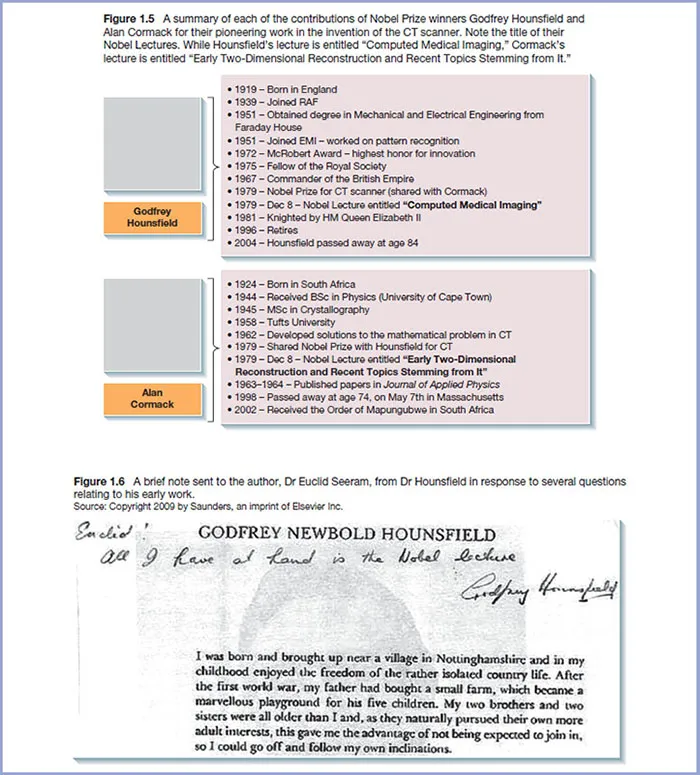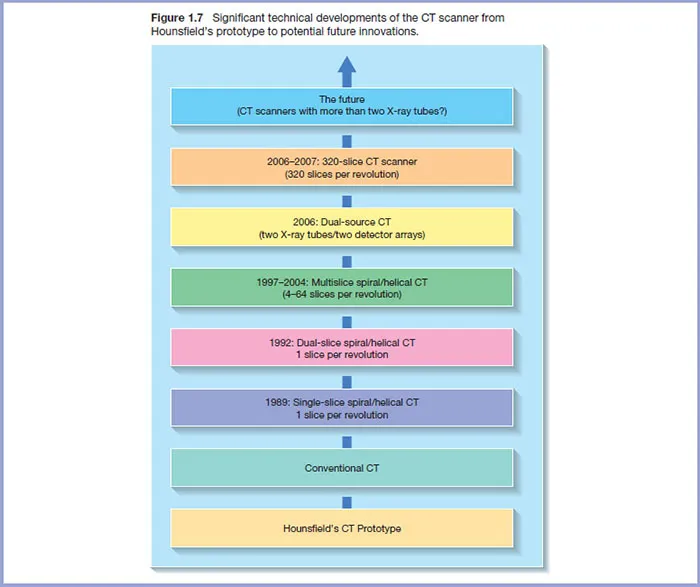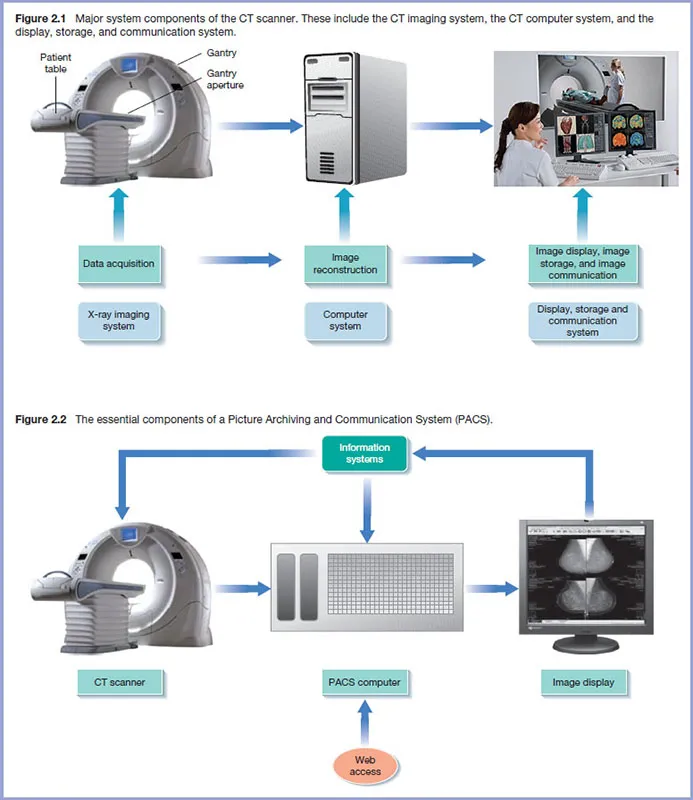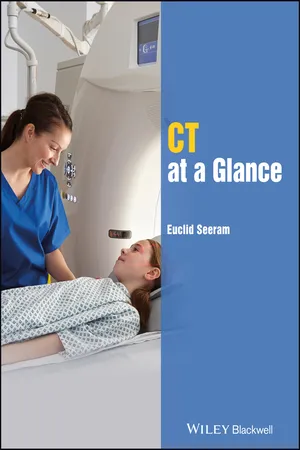CT at a Glance
About this book
CT at a Glance gets readers quickly up to speed with the core knowledge and competencies required for computed tomography (CT) scanning, as established by the major radiography organizations around the world, including the ASRT and the CAMRT. This brand new title describes the basic science behind CT with an emphasis on the theory that is essential for practice. Featuring an abundance of illustrations, succinct, straightforward explanations and clear, step-by-step guidance, it includes the fundamental physics, technical principles, and imaging strategies and procedures involved in CT scanning.
Over the course of twenty four, concise modular chapters, CT at a Glance covers all the bases for entry-to-practice students, including:
- The basic physics underlying CT scanning
- State-of-the-art multi-slice technologies
- Data acquisition strategies
- Equipment components—their functions and applications
- Image reconstruction and image quality control
- CT dose and dose optimization procedures
- Quality control fundamentals
CT at a Glance is an indispensable learning resource for students in medical imaging technology courses, including those covering radiography, nuclear medicine, and radiation therapy, as well as for biomedical engineering technology students.
Frequently asked questions
- Essential is ideal for learners and professionals who enjoy exploring a wide range of subjects. Access the Essential Library with 800,000+ trusted titles and best-sellers across business, personal growth, and the humanities. Includes unlimited reading time and Standard Read Aloud voice.
- Complete: Perfect for advanced learners and researchers needing full, unrestricted access. Unlock 1.4M+ books across hundreds of subjects, including academic and specialized titles. The Complete Plan also includes advanced features like Premium Read Aloud and Research Assistant.
Please note we cannot support devices running on iOS 13 and Android 7 or earlier. Learn more about using the app.
Information
1 Computed tomography: an overview

Introduction
Radiographic imaging
CT imaging

Nobel prize for the invention of the CT scanner

The technical evolution of CT

2 Major components of a CT scanner

Ma...
Table of contents
- Cover
- Title Page
- Copyright
- Dedication
- Foreword
- Preface
- Acknowledgements
- 1 Computed tomography: an overview
- 2 Major components of a CT scanner
- 3 How CT scanners work
- 4 Data acquisition principles
- 5 X-ray tubes and generator technologies
- 6 X-ray beam filtration and collimation
- 7 Essential physics: radiation attenuation
- 8 Attenuation measurements and CT numbers
- 9 CT detector technology basics
- 10 CT image reconstruction basics
- 11 CT image display and storage
- 12 CT and picture archiving and communication systems (PACS)
- 13 CT image postprocessing
- 14 Multislice CT – essential principles: part 1
- 15 Multislice CT – essential principles: part 2
- 16 Image quality: part 1
- 17 Image quality: part 2 – spatial resolution
- 18 Image quality: part 3 – contrast resolution
- 19 Image quality: part 4 – noise
- 20 Image quality: part 5 – artifacts
- 21 CT dose optimization: part 1
- 22 CT dose optimization: part 2
- 23 Optimization of radiation protection in CT
- 24 CT quality control basics
- Index
- EULA
